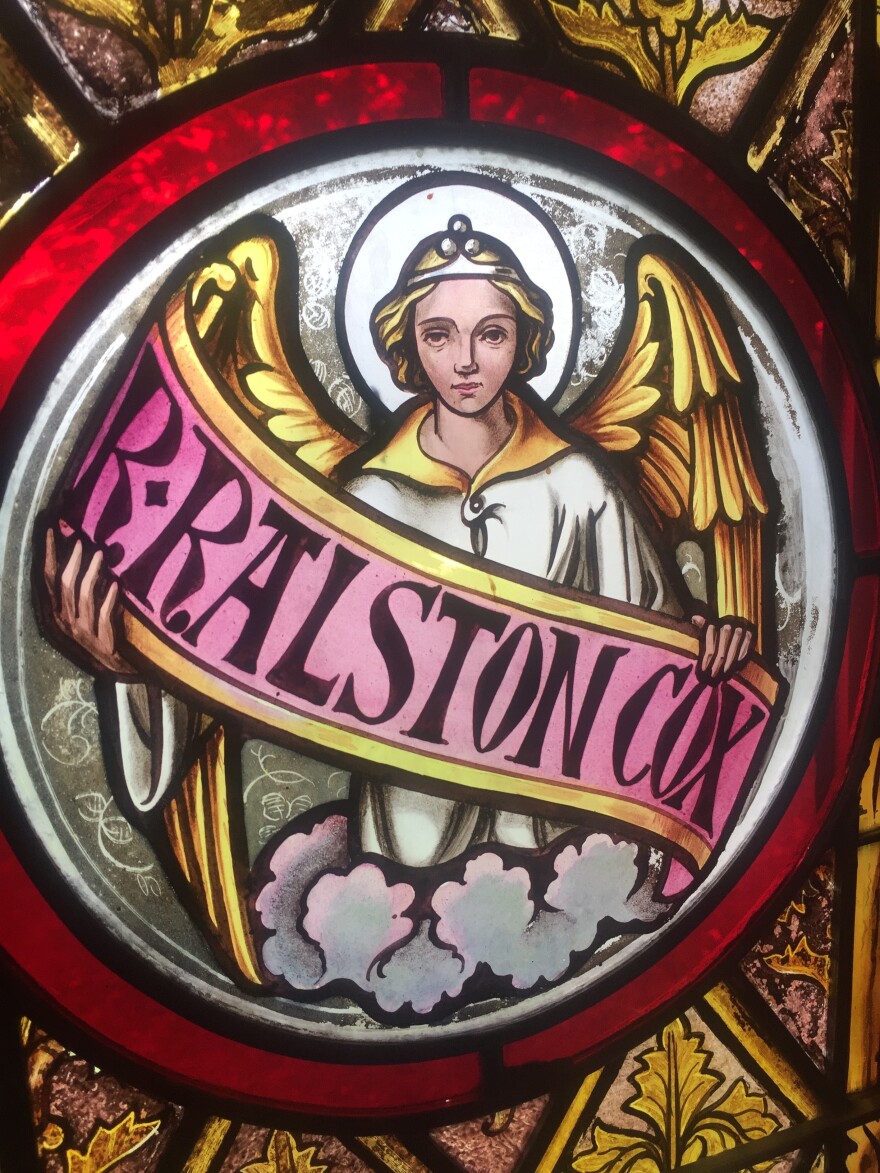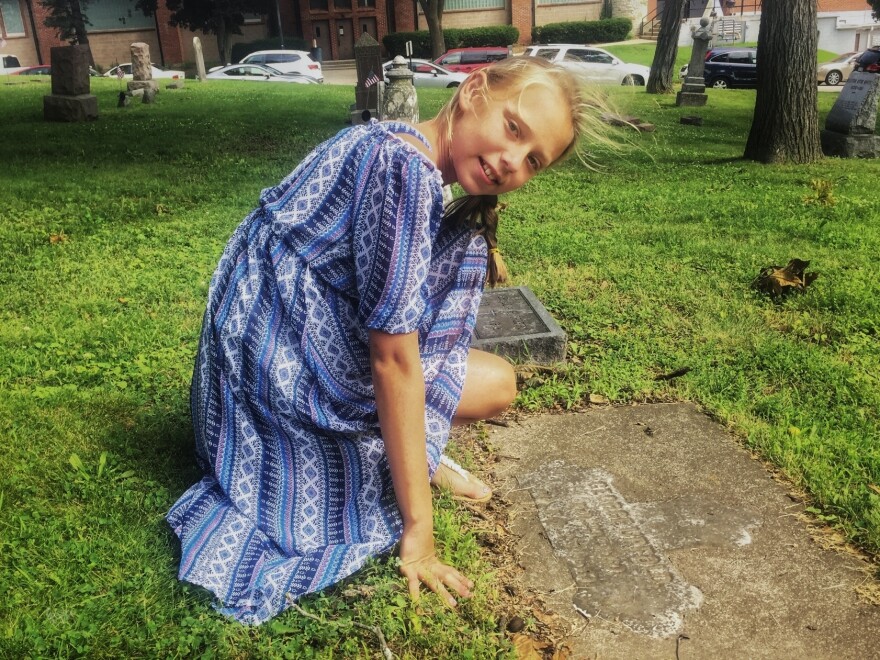The small wooden church is half-hidden, nestled on a hill in southeastern Wisconsin in the city of Delafield. St. John Chrysostom Episcopal Church was built in 1851, one of the historic "carpenter Gothic" churches surviving in the United States, and on the National Register of Historic Places. It's such a quiet place residents often forget it's there, though it was established by the pioneer founders of the city.
As a girl in Delafield, I wondered about its strange name, and the tombstones that went from the graveyard up to the door. I was lucky enough to meet Father Steven Peay, who fills in sometimes for the regular rector. St. John Chrysostom, Father Steven Peay explained to me, was the name of a 4th century bishop of Constantinople. He was the patron saint of preachers, and the Greek name "Chrysostom" was given to him because it means "honeyed mouth" or the "golden-mouthed one." Steven Peay is an emeritus dean of nearby Nashotah House Theological Seminary, which is an influential, "high church" Episcopal seminary. While there, he taught church history and homiletics — the art of preaching and writing sermons.

In the 19th century, Ralston Cox was a seminarian at Nashotah House when he decided to start his own mission church a couple miles away in Delafield, then on the Northwestern frontier. Cox traveled from Wisconsin to Philadelphia to consult with the famous church architect, Richard Upjohn. But on his return trip to Wisconsin, tragedy struck. Cox drowned in the Ohio River. His family built the church as his memorial, of oaks so tall there are no knotholes anywhere.
"This is all wood and lathe," said Father Peay, showing me around through an arched doorway. These doors and their wrought iron hinges and trims — they match a church in England — were all made by the local village blacksmith, named John Luther. Also original: the narrow pews and the pulpit.
There have been some illustrious "golden-mouthed ones" in that pulpit. None more so than Arthur Michael Ramsey, the 100th Archbishop of Canterbury. He came to Nashotah House to teach at the seminary, which still keeps the bishop's staff and 10-gallon Stetson his students gave him. Father Peay says that when he preaches at St. John's Chrysostom, he senses what he calls "a thin place."
"Where you know that the space between you and God is very thin, and where you feel very very close to God. And I think you would discover, when you talk to parishioners, that they feel the same way."

It is a "thin place" too because of the connection to the past. Melissa Eriksen grew up in the church. "My husband was baptized here, we were married here, my kids were baptized here, my sister is buried here, so it's all a very personal connection to me in this parish," she said.
And there are more connections in the graveyard. It's like "Spoon River Anthology," where "All, all are buried together on the Hill." There's Charles Delafield, who donated the church land and gave the city his name. Nelson Hawks, who had a stagecoach inn. The church sexton is buried by the side door. There's the Cox family, and their in-laws, the Markoe's. Mary McGlinchey, a parishioner for 50 years, takes me outside to the cemetery.
"When I go in through the cemetery, and I see Markoe and Cox and Hawks and all these families; I think they had a vision," McGlinchey said. "And 160 years later, this church is still standing. I just don't think that this world can appreciate the effort , and what this church stands for."
Her young daughter is buried in the cemetery, too.
The St. John Chrysostom church of 1851 is indeed, after almost two centuries, still a thin place, and an enduring sanctuary, in my hometown of Delafield, Wis.
Copyright 2021 NPR. To see more, visit https://www.npr.org.




